Bring simplicity into your space by embracing Scandinavian interior design. In this blog, Laura Lambert, our marketing brand manager will be sharing how to achieve Scandinavian-style wood flooring.
What is Scandinavian interior design?
Scandinavian interior design is all about bringing nature indoors. Harsh climates in Scandinavian countries have meant that outdoor design has focused on functionality and simplicity over decoration. This is so as to withstand severe weather conditions. Over the years, this trend has transferred to indoor interiors.
Wood flooring is a huge part of this aesthetic, as it forms the foundation of the whole space. Wood flooring could even be thought of as the largest piece of furniture in the room, and so is something that is very well considered in this style of interior design.
Scandinavian wood flooring is all about adding texture and depth to a room, keeping the space feeling warm and cosy for the long dark winters, while keeping the colour palette muted and neutral.
Traditionally, wide planks were the design of choice. This still stands today, but herringbone is becoming increasingly popular, particularly in Sweden. Open plan living is a key element of Scandinavian living, and hardwood floors are the perfect way to tie the open spaces together. Planks running down the length of a room will elongate the space, while herringbone flooring is perfect for L-shaped or odd shaped rooms. Read on to find out the characteristics of this trend.
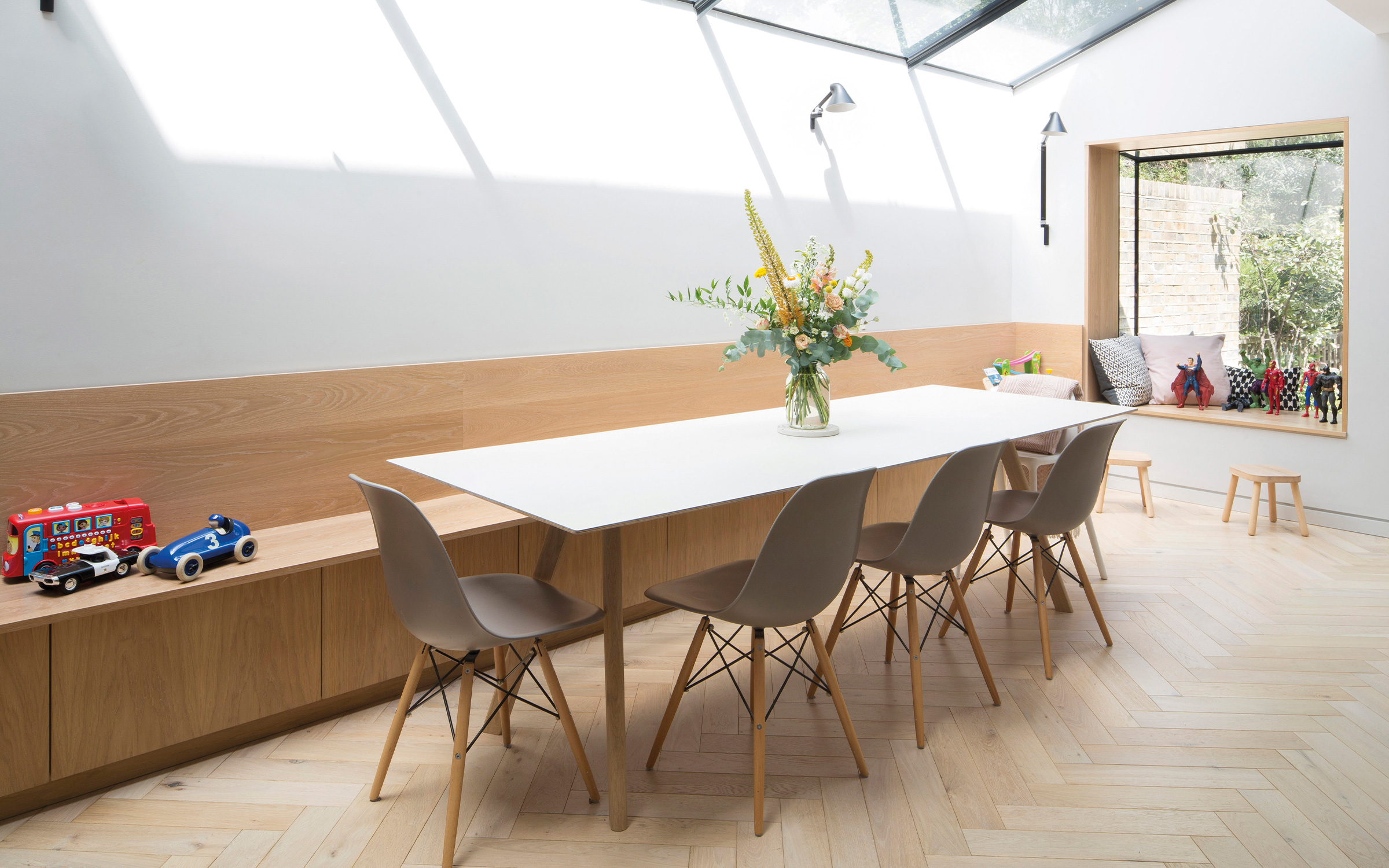
Characteristics Of Scandinavian Style Flooring
The main characteristics of Nordic style and Scandinavian style are that the timber is very natural and minimalistic while remaining extremely functional. It is also important to make sure that the wood flooring is sustainably sourced, as this is good for the planet and good for your wellbeing.
This style has been popular for many years now, with its prevalence in British homes increasing as we began to yearn for a sense of comfort and security while looking for the all-important work/life balance.
Since the rise of Hygge in the UK around 10 years ago, we began to see our homes as our sanctuaries, and so we saw an increase in neutral, muted colour palettes, layers of texture and depth in our homes, and the use of natural materials. Scandi flooring therefore creates a cosy yet minimalistic aesthetic.
Flooring is a brilliant way to bring this feeling into your home, as it grounds and underpins your entire interior scheme. Natural wood matches any interior and so is particularly good for Scandi styles. Don’t be afraid to pair different shades of wood furniture with a lighter floor, as it only adds to the depth of texture. For more information on furniture and floor pairings, read our blog: How to Choose the Right Dining Room Flooring
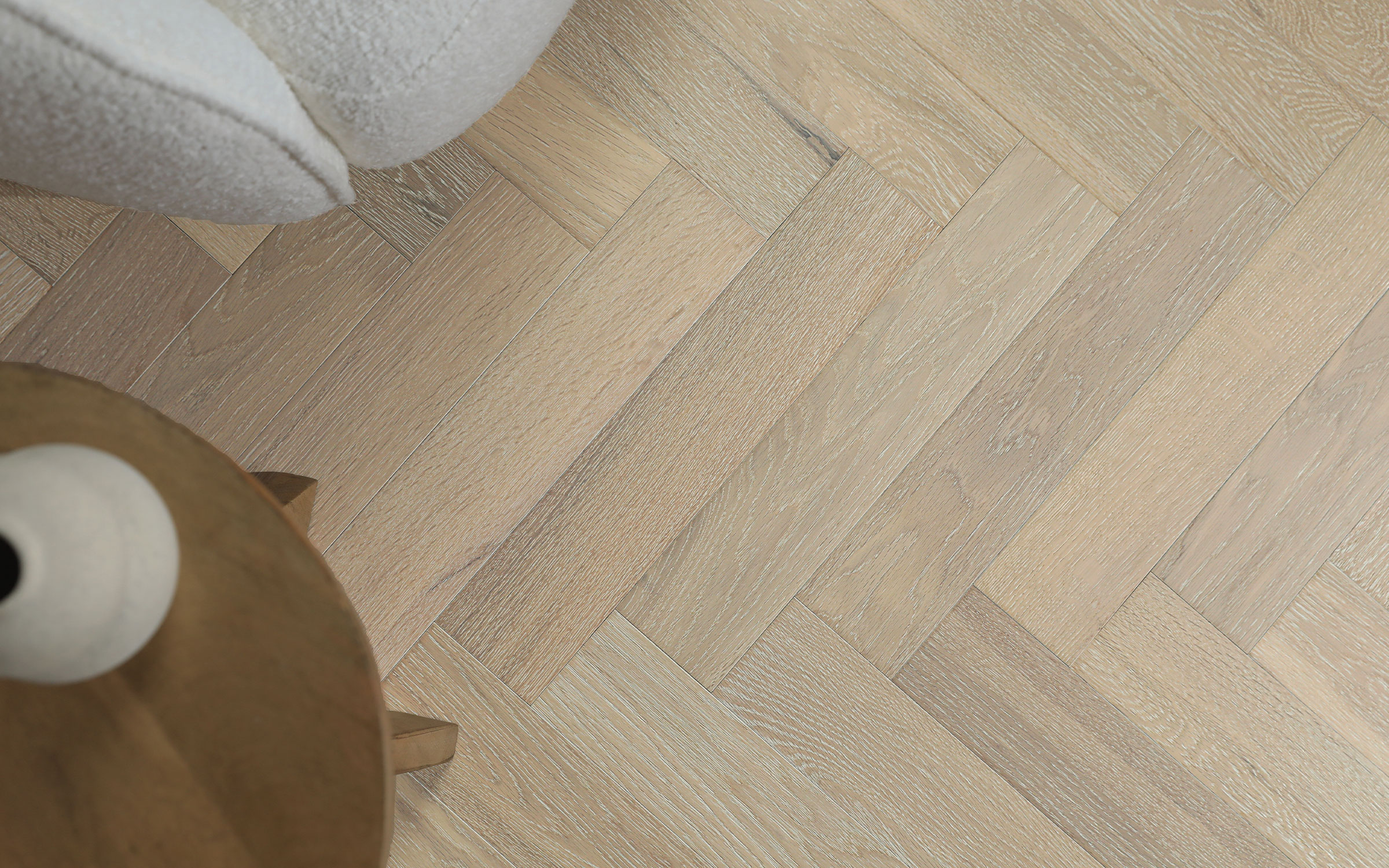
Best Types Of Wood For Scandinavian Flooring
The best types of wood to use to achieve this style would be Oak, Pine or Douglas Fir. This is because these are typically light-coloured woods, which can effortlessly brighten a space. Read on as we highlight the benefits of each of these wood flooring solutions.
Light Oak Flooring
Oak that has been whitewashed is a great choice as it has the natural, pared back look that you want to achieve. It looks effortlessly stylish and creates the perfect neutral backdrop. It can help with reflecting light and making a room seem bigger, which is so important as Scandinavian design centres around creating light, bright spaces during their long, dark winters. Here at Ted Todd, we offer a range of oak flooring solutions including Brindle, Linton and Haling. Each will beautifully complement your space, whichever flooring tone you choose.
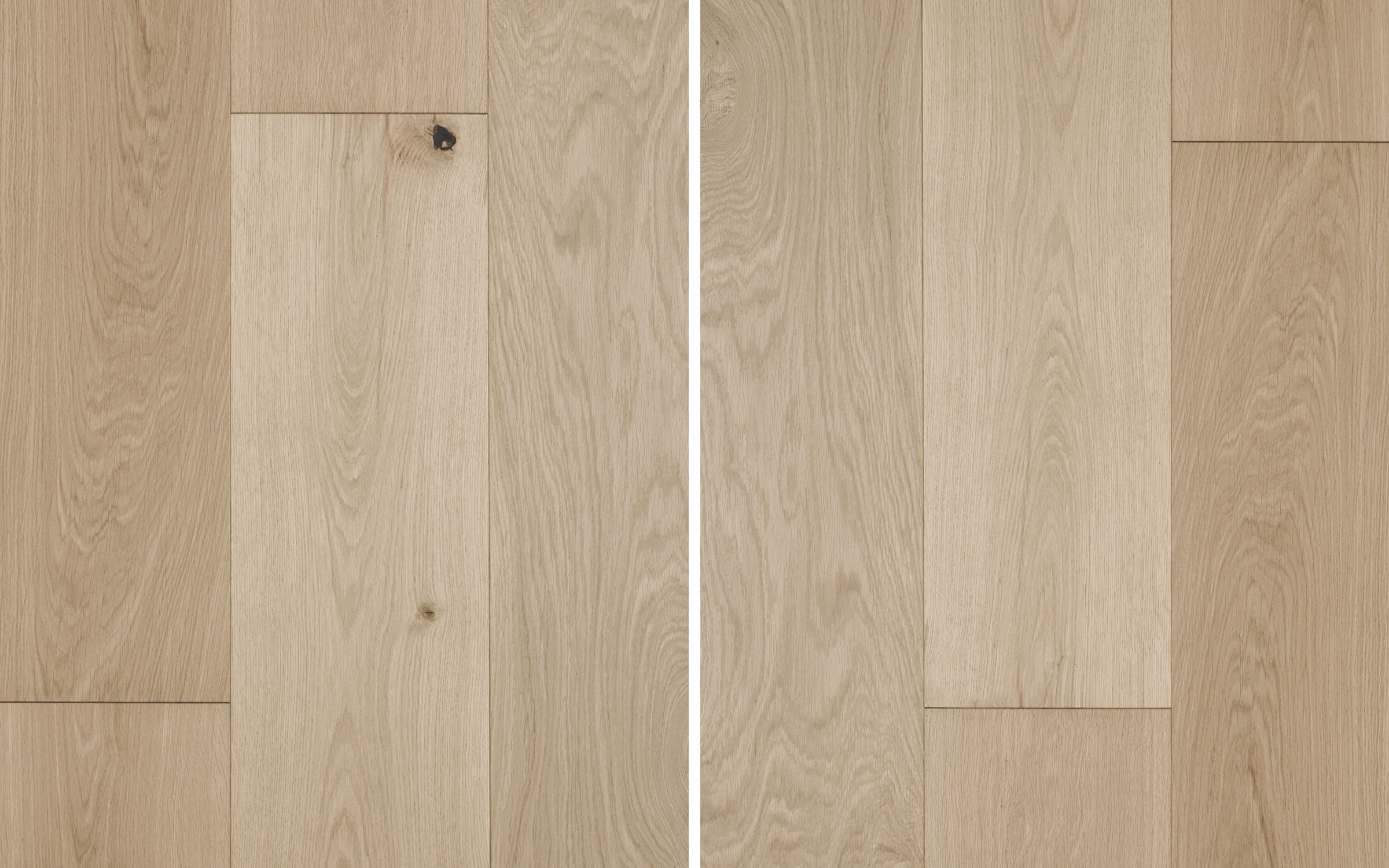
Pine Wood Flooring
Bleached pine is a modern twist on a classic. Pine didn’t always have the best reputation, as it was most well-known for the orange-hued cladding that was so common in the 1970s, but it has had a revival and is now often bleached for a cool, understated look.
Douglas Fir
Douglas Fir has a prominent grain pattern, is beautifully pale in tone, and is often found amongst the pages of interior design magazines. It has extraordinary dimensions, with super long and wide planks. It has a wonderfully prominent grain pattern which makes a subtle statement, while its neutral colour allows it to seamlessly blend into the scheme. Our Delamere plank wood flooring is characterised by its natural wide grain, creating a sleek, clean look. View today: Delamere
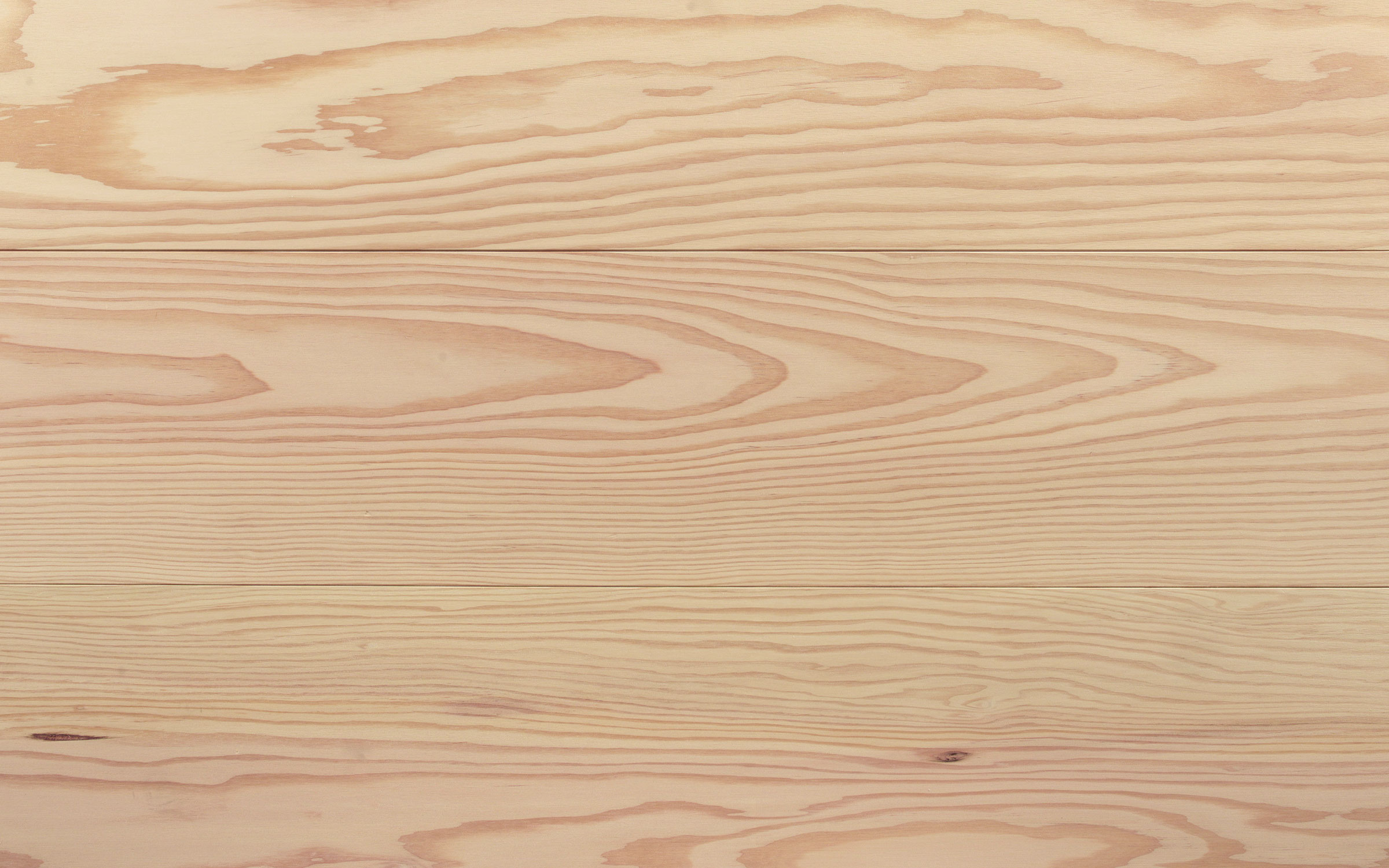
The Importance Of Colour
Colour is very important in Nordic and Scandinavian design. A light, neutral colour palette is at the core of this style, with white or very pale walls being a must.
The importance of colour also extends to the floor, as we have outlined above. Having all of your surfaces a pale, neutral tone gives the feeling of a larger, brighter space, which is so important for happiness and wellbeing.
One way to add colour to the scheme is through the use of accessories. Below, we’ll be revealing how this can be achieved.
Adding Scandinavian Flooring Accessories
You can bring other textures to the space with accessories, and these can help warm up the room if it is feeling a little cold. Although Scandi interior design is all about minimalism, it’s also important to add personality to a space, and accessories can help you to do this. Here are a few accessories to consider:
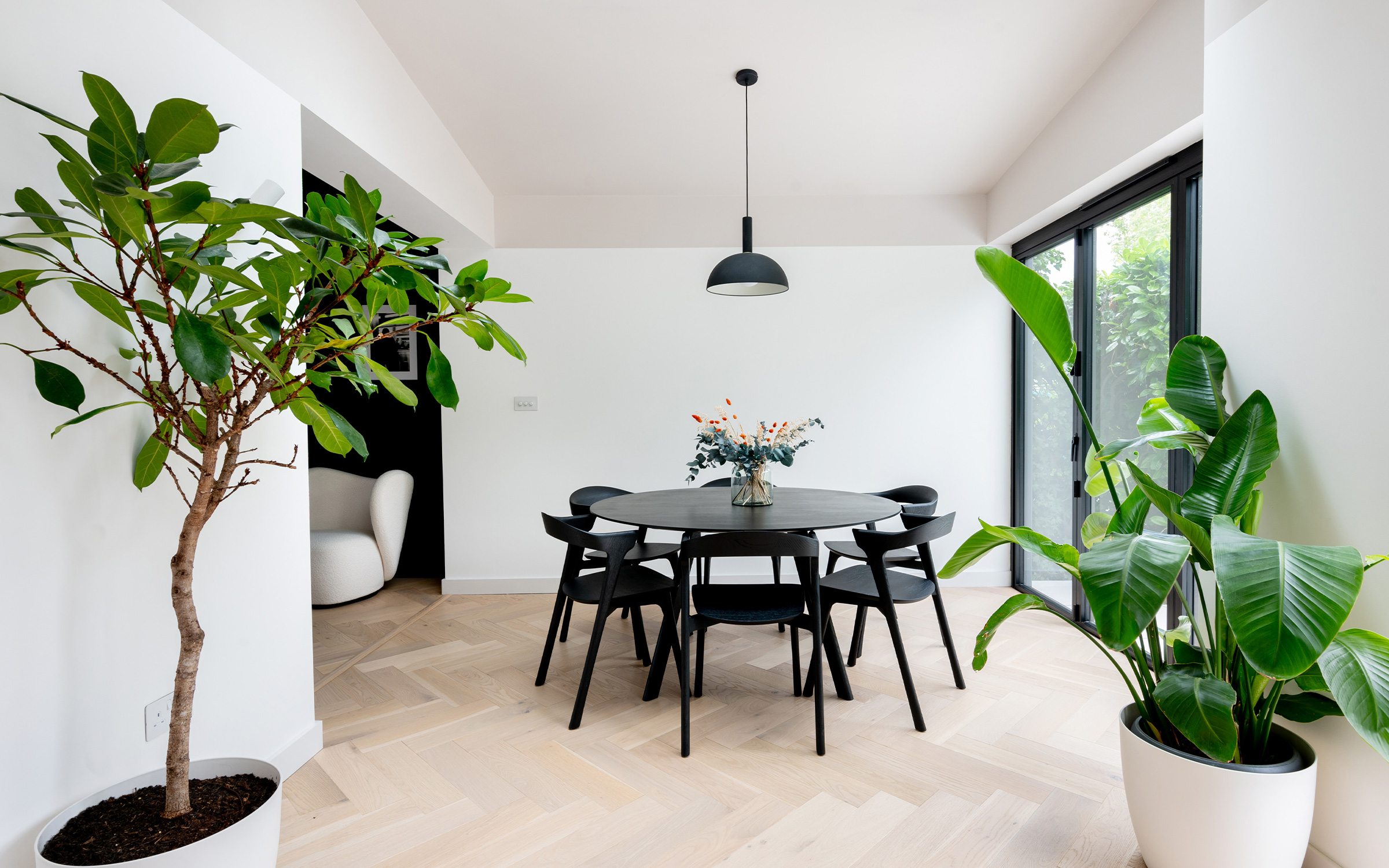
1. Plants
Greenery in the form of plants adds another dimension and is a second way to bring nature indoors. Not only is this a sustainable choice, but it can also help to improve air quality in the home and even boost your mental health. This can make a space much more inviting.
2. Soft Textiles
Softer textiles such as blankets, cushions and throws add warmth, which can be a necessary comfort in the winter. Even in the summer, when bright white light streams through your home, these soft textiles can be used to add splashes of colour to break up the neutral palette. Similar to the grain in wood flooring, soft textiles can also add depth to the space.
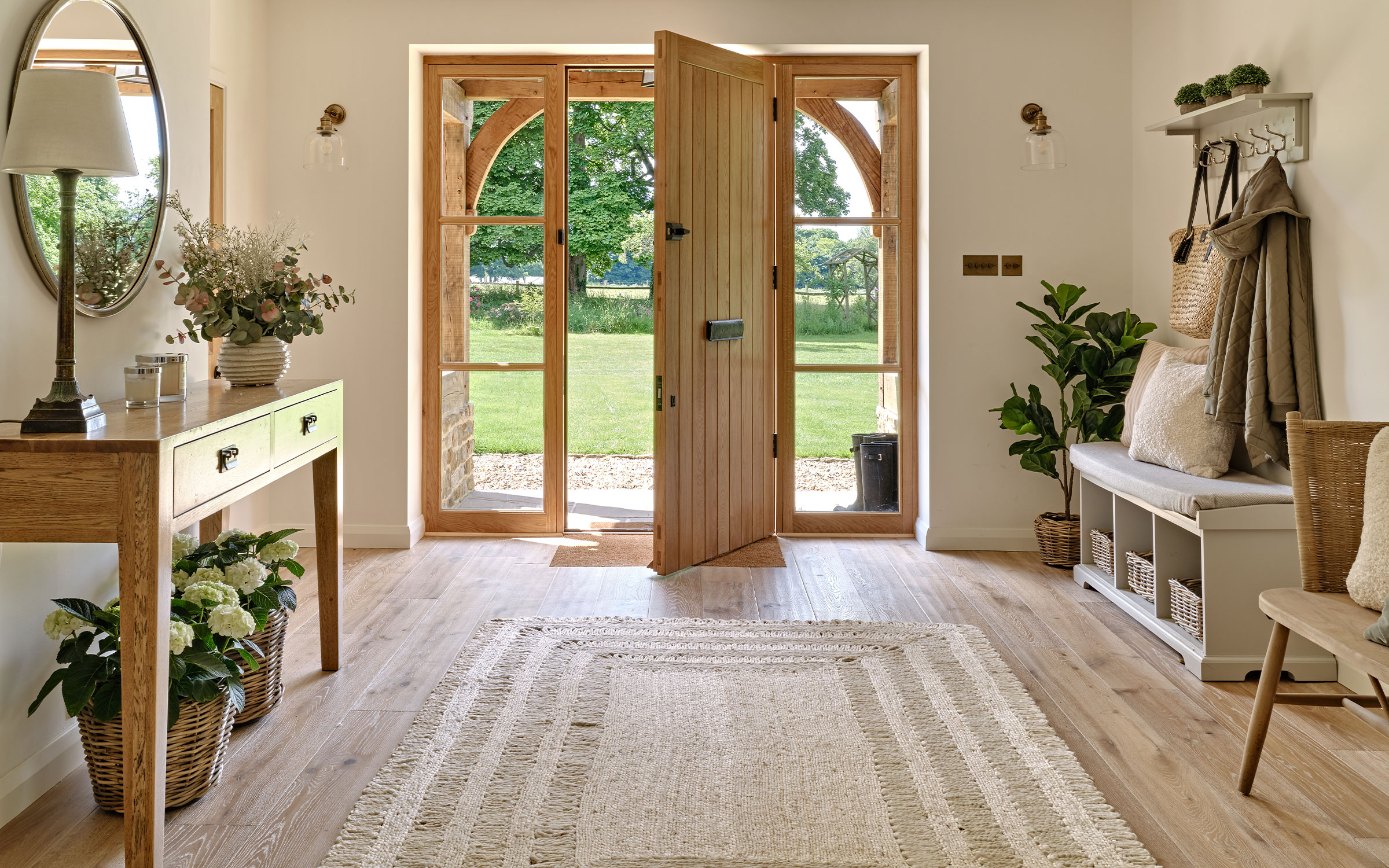
3. Rugs
Rugs are another way to brighten your Scandinavian flooring. In keeping with the trend, we would recommend either selecting a plain neutral rug or one with a simplistic pattern. The shape of the rug on the flooring and even the patterns within the rug create simple lines, a key characteristic of Scandi decor. Alongside their aesthetic appeal, rugs are also practical in that they can protect your wood flooring from damage.
4. Lights
Lamps and lighting are another thing to think about: make use of both ambient lighting and task lighting to make the space feel light yet cosy. Options like floor lamps can be moved around to breathe brightness into the darkest corners of a room.
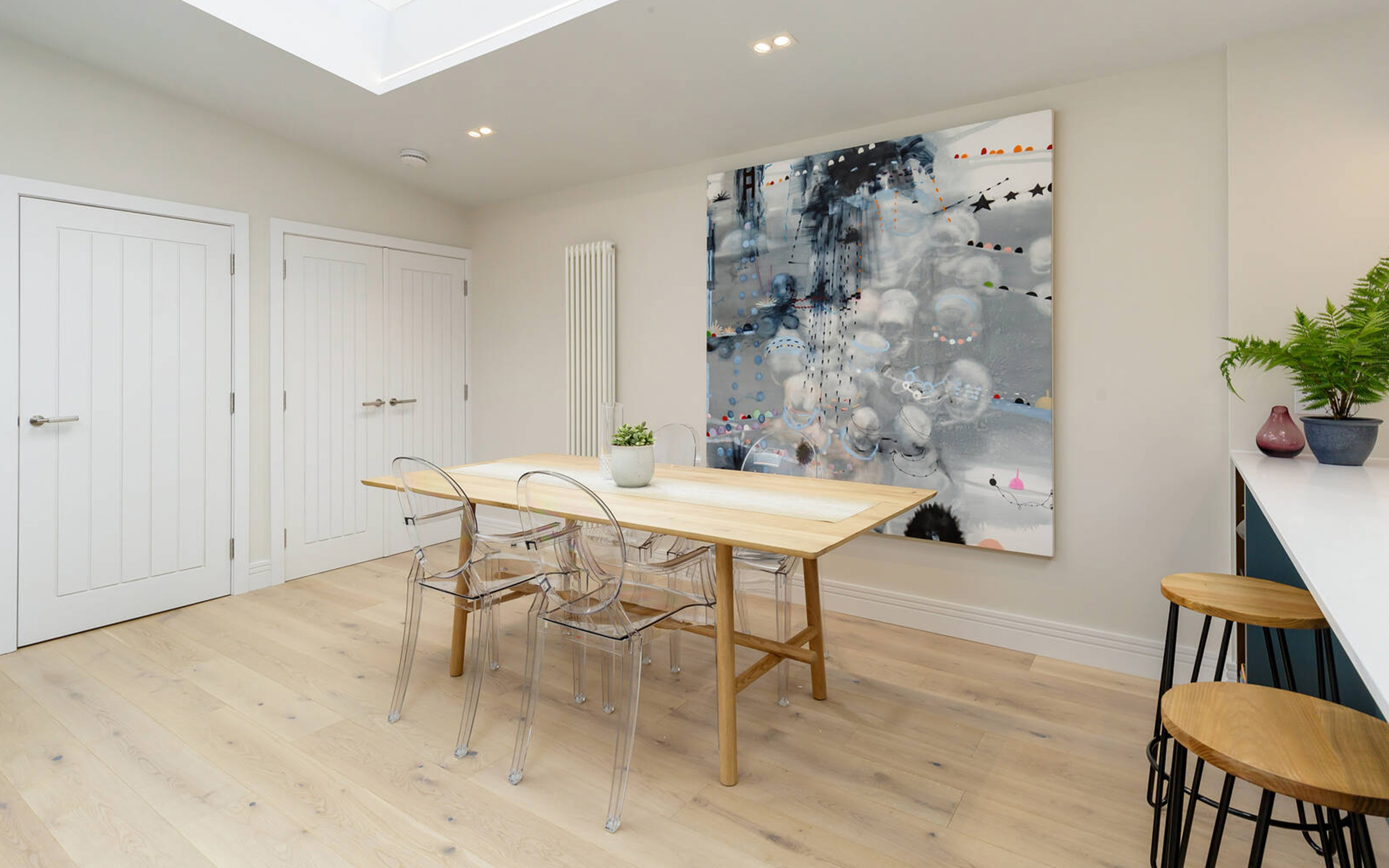
5. Modern furniture
When it comes to furniture, opt for mid-century modern pieces if you’re looking for something in keeping with Scandi design. The clean, sleek lines and natural tones of this style furniture are ideal for those who want the minimalist Scandi aesthetic. White pieces should also be introduced to the room where they can, to maintain a clean and light feel.
6. Storage
Storage as décor is a really popular way to add interest. Open shelving and clothes rails instead of wardrobes is functionality at its best and helps add texture to the room. This encompasses the practicality aspect of the Scandi trend, allowing you to showcase the organisation of your home. This perfectly complements the neat, clean feeling that Scandi flooring creates.
7. Wall Furnishings
Features like mirrors and artwork can add balance to the home. A space will look much more visually appealing than if the floor was busy with furniture, yet the walls were bare. Circular mirrors and modest artwork can help to inject style into a space, whilst bringing in the ‘simple lines and shapes’ aspect of Scandi design.
Scandi-Flooring Inspiration
Here are some of our favourite Scandi style homes.
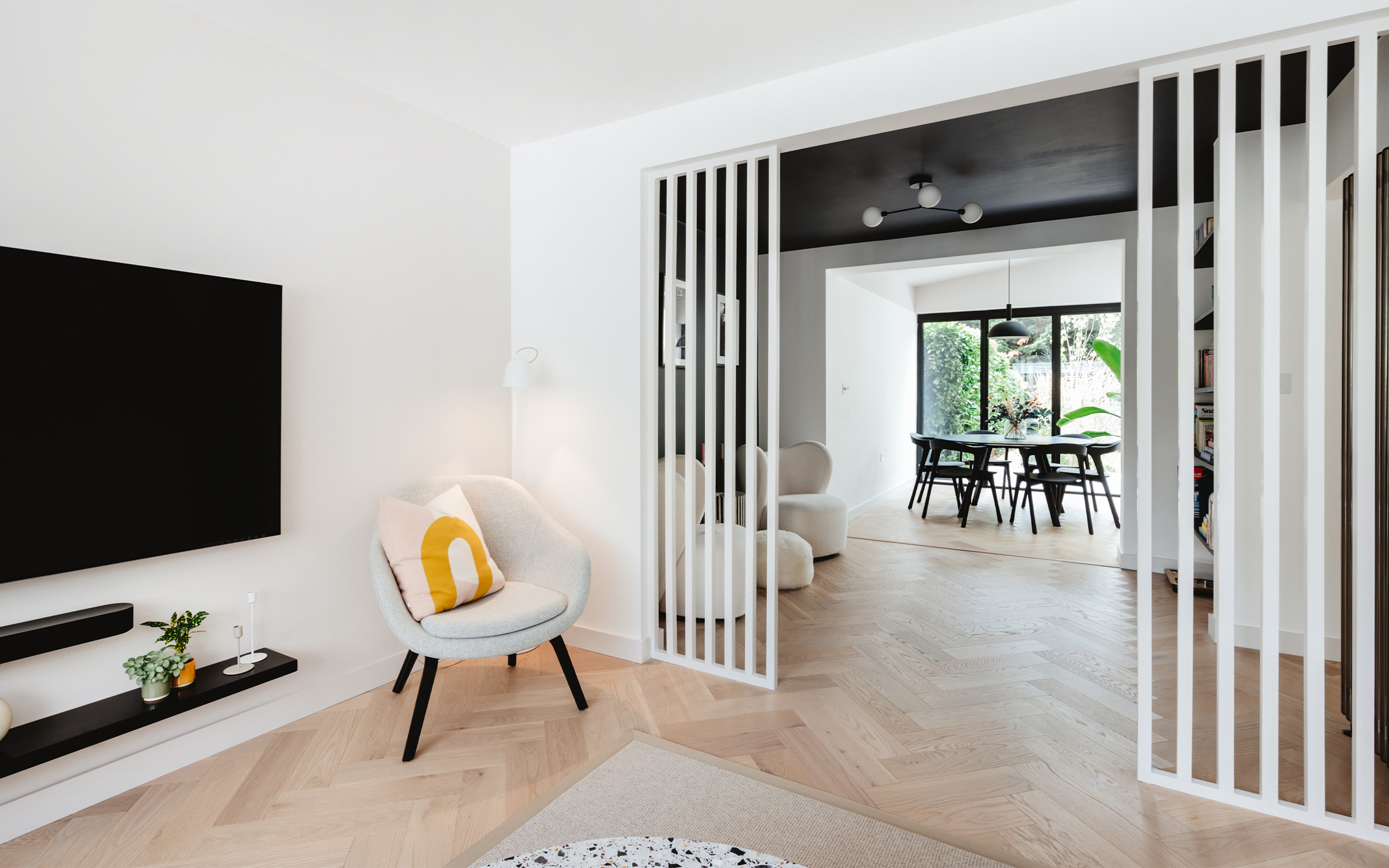
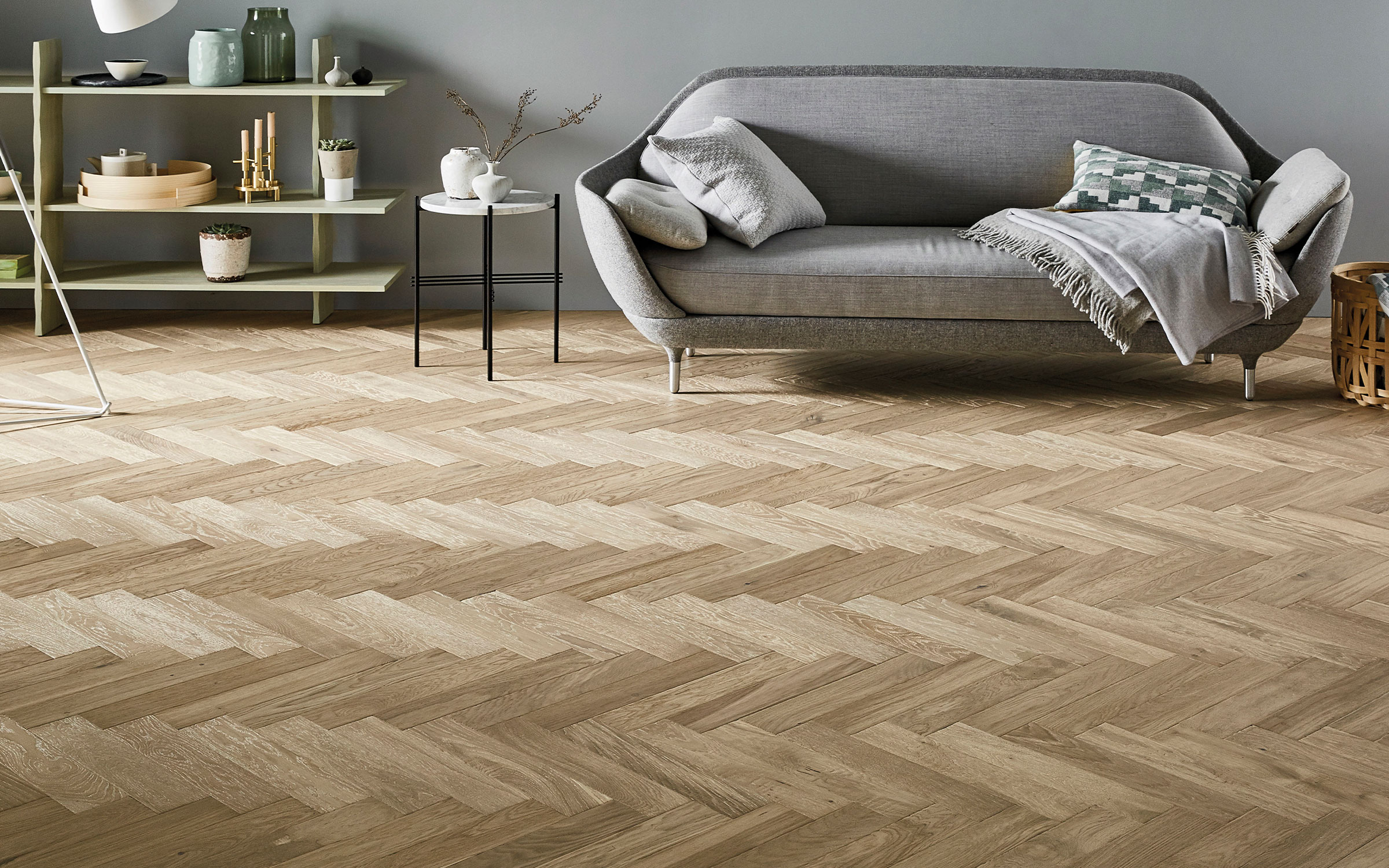
Summary
In summary, if you’re looking to make your home into a Scandi sanctuary, a neutral colour palette and light wood floor is the way to go. It is also important to stay minimalistic and put sustainability first. Keep it light, bright and airy, think of functionality over design, and you can’t go wrong!
If you need our assistance to choose your Scandinavian flooring look, we can help. We supply a range of award-winning light wood flooring options to transform your space. Order a free sample of your favourite three wood floors by placing the samples in your basket, filling out your details, and then we’ll ship them directly to your door. Order yours today: Free Wood Flooring Samples